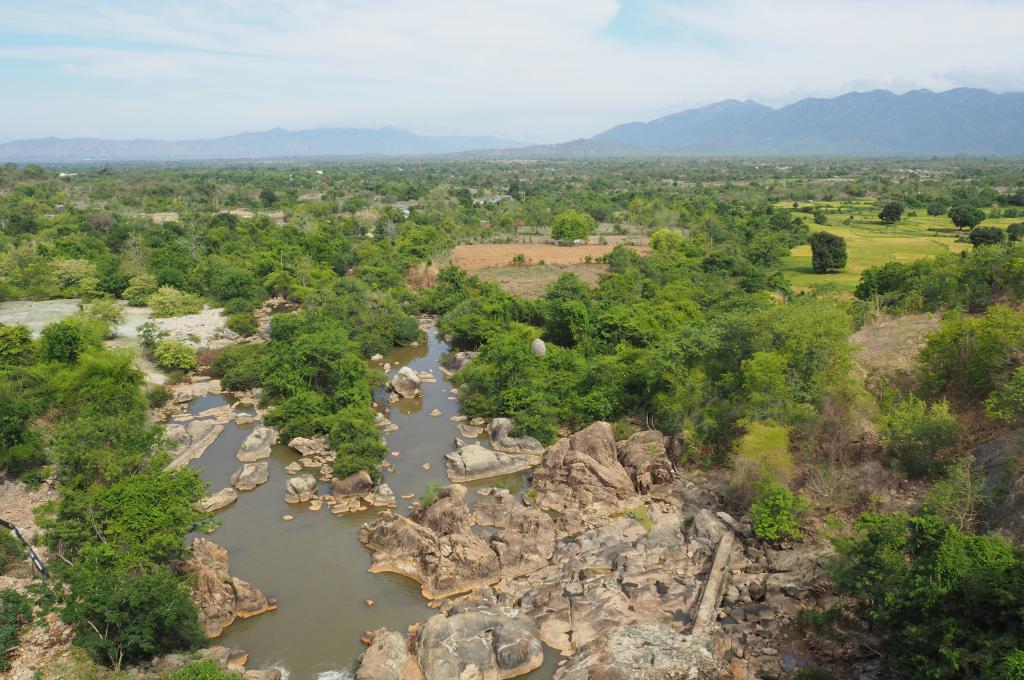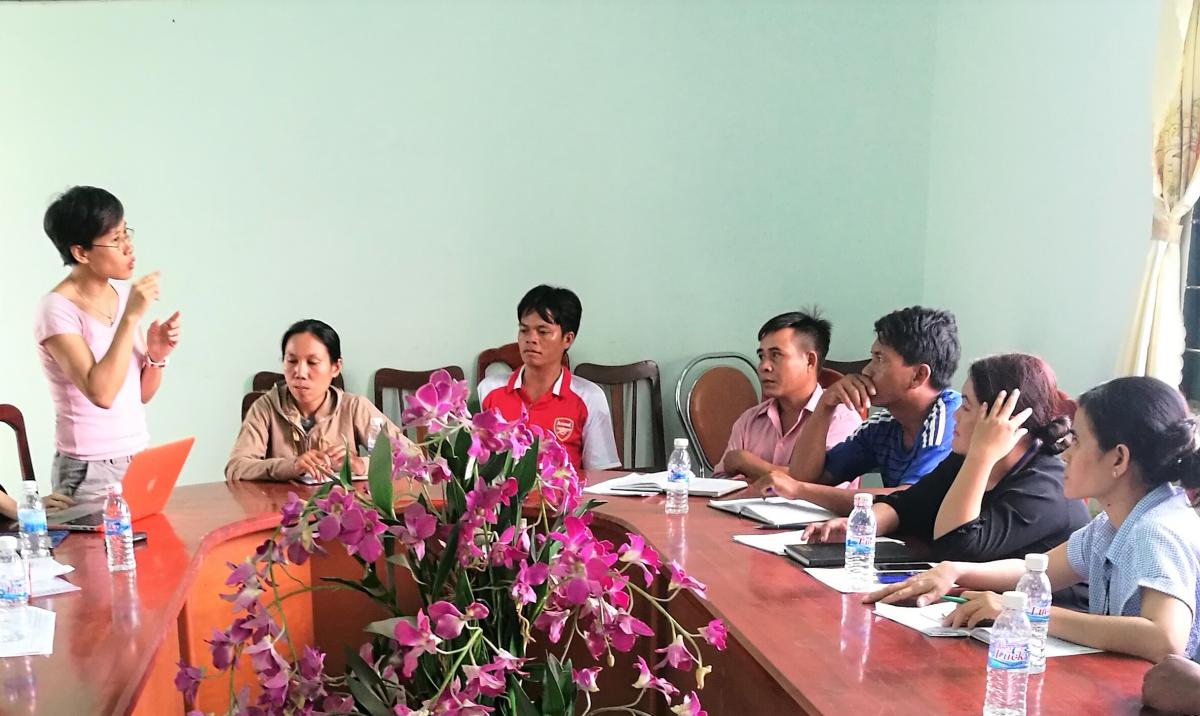Mainstreaming Gender in Drought Forecasting

Vietnam experienced one of its worst droughts in almost a century from 2015 to 2016, affecting over 2 million people in 52 provinces nationwide. Ninh Thuan, a province in south central Vietnam with a population of just over 600,000, was severely affected.
To support water resource planners in decision-making at regional, national and sub-national levels to cope with drought and manage water effectively for economic and agricultural activities, SERVIR-Mekong, in collaboration with the Vietnam Academy for Water Resources is developing a GIS application to forecast drought conditions in the Mekong region. To expand the accessibility of the tool, SERIVR-Mekong also plans to make it available to water users at the community level among men and women farmers and others. To enable this, the service is currently being piloted in Ninh Thuan -- one of Vietnam’s most drought-prone provinces.
Water use and impacts of drought are not gender neutral. Different groups of farmers such as men, women, ethnic minorities, young and old, may engage in different tasks in agriculture and water planning and thus, the need for forecasting may vary. To understand the different needs, a research team from SERVIR-Mekong, Asian Disaster Preparedness Center (ADPC) and the Stockholm Environment Institute (SEI) in collaboration with the Vietnam Academy for Water Resources and the Vietnam Women’s Union conducted a gender-sensitive user’s needs assessment which aims to support the design of a gender-sensitive and user-friendly drought forecasting service. This included examining the accessibility, the needs and requirements for drought forecast, particularly of local women and men in two communes in Ninh Thuan Province. The team engaged in consultation meetings with local stakeholders at the provincial, district and commune levels to gather information that will enable SERVIR-Mekong to adapt the drought forecasts into practical uses.

Local agencies such as the Department of Agriculture and Rural Development were receptive to SERVIR-Mekong’s drought monitoring service introduced through the Vietnam Academy for Water Resources. While villagers are supportive of the drought monitoring service, they still rely on low-technology messaging through loud speakers and printed bulletin. Moving forward, it is important to provide accurate drought forecasts while accommodating to different expectations from people across gender and ethnic groups.
“The online technology could provide information to commune leaders and help local farmers plan ahead for growing crops and stop harvesting when there is no water,” says 36-year-old Ta Yen Ti Cam, one of the female heads of the Phuoc Ha commune and a member of the Raglei minority group. She was elected as a leader of the commune back in 2016 when she quit her teaching job to live in this farming community with her husband and two young sons.
Ta Yen echoed the sentiments of many other women in the local communes. While men and women have equal opportunities to access various drought forecasting channels and attend meetings, water allocation and crop planning remain top-down decisions from district level and local farmers, especially women, have very little negotiating power in water management. Most members of local participatory irrigation management groups (PIM) are men and older generation farmers from the Kinh majority group still view decision making at the community level as predominantly men’s responsibility.
Recently, the people of Ninh Thuan experienced another severe drought season which has forced villagers to at least temporarily migrate to big cities for work to supplement the loss of income by not being able to farm. As next steps, there is a need to adapt the drought service to cater to different user needs, as well as appeal to non-agricultural sectors such as health departments and community-based water user organizations. Training for these user groups will also be essential while promoting increased participation of women at decision making levels, particularly in groups such as the PIM. This may involve collaboration with existing programs working with local PIM groups implemented through the Vietnam Academy for Water Resources .
SERVIR-Mekong’s drought monitoring service will be replicated in other provinces if it is successfully implemented in Ninh Thuan. With increased participation and adoption over time, it can help minimize the impacts of drought and creating more resiliency for crop production in local farming communities.



